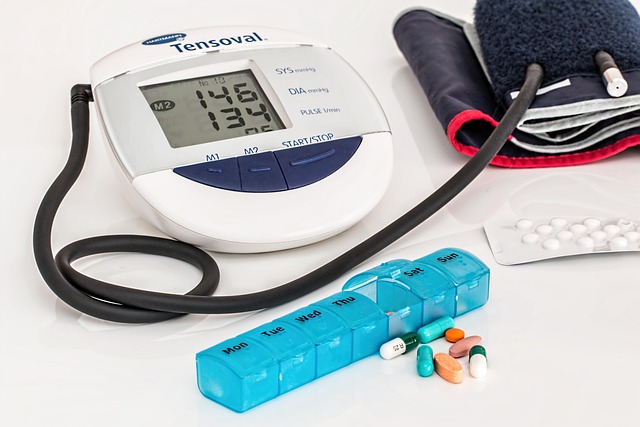How to Soothe and Treat Bed Bug Bites Safely
Bed bug bites can cause significant discomfort, leaving red, itchy welts on your skin that disrupt sleep and daily activities. These small parasitic insects feed on human blood, typically at night, and their bites often appear in clusters or lines. Understanding how to properly identify, treat, and care for bed bug bites is essential for quick relief and preventing complications. This guide provides practical, evidence-based steps to manage symptoms, protect your skin, and know when professional medical attention is necessary.

Bed bug bites are a common nuisance that can affect anyone, regardless of cleanliness or living conditions. These nocturnal pests leave behind irritating marks that require proper attention and care. Knowing the correct treatment methods helps minimize discomfort and supports faster healing while reducing the risk of secondary infections.
Identify Bed Bug Bites and Assess Severity
Bed bug bites typically appear as small, raised, red bumps on exposed areas of skin such as the face, neck, arms, and hands. They often form distinctive patterns, appearing in clusters, lines, or zigzag formations where the bug has fed multiple times. The bites may develop a darker red center and can range from barely noticeable to significantly swollen, depending on individual sensitivity.
Most people experience mild to moderate reactions, including redness, swelling, and persistent itching. However, some individuals may develop more severe symptoms such as large welts, blisters, or hives. In rare cases, allergic reactions can occur, characterized by difficulty breathing, fever, or widespread rash. Assessing the severity of your reaction helps determine the appropriate treatment approach and whether medical intervention is needed.
The timing of symptoms varies among individuals. Some people notice bites within hours, while others may not see visible signs for several days. Bites can persist for several days to weeks, with itching often intensifying before gradually subsiding as the body heals.
Clean and Protect the Affected Skin
Proper hygiene is the foundation of effective bed bug bite treatment. Begin by gently washing the affected area with lukewarm water and mild, fragrance-free soap. This removes saliva residue, bacteria, and potential allergens from the skin surface, reducing the risk of infection. Pat the area dry with a clean towel rather than rubbing, which can further irritate sensitive skin.
After cleaning, avoid scratching the bites, as this breaks the skin barrier and introduces bacteria that can cause infection. Keep fingernails trimmed short and consider wearing lightweight, breathable clothing that covers affected areas to minimize unconscious scratching during sleep. For children who may have difficulty avoiding scratching, consider using soft cotton gloves at night.
Maintaining skin cleanliness throughout the healing process is essential. Wash the affected areas twice daily and change bed linens, clothing, and towels regularly to prevent recontamination and support optimal healing conditions.
Relieve Itching and Reduce Inflammation
Managing itching and inflammation significantly improves comfort during the healing process. Over-the-counter topical treatments provide effective relief for most people. Hydrocortisone cream, available in 0.5% to 1% concentrations, reduces inflammation and itching when applied two to three times daily. Calamine lotion offers a soothing, cooling effect that temporarily relieves discomfort.
Antihistamine medications, both topical and oral, help control allergic responses and reduce itching. Oral antihistamines such as diphenhydramine or cetirizine can be particularly helpful for widespread bites or nighttime relief. Always follow package directions and consult a pharmacist if you have questions about appropriate dosing.
Natural remedies can complement conventional treatments. Applying a cold compress or ice pack wrapped in a thin cloth for 10 to 15 minutes several times daily reduces swelling and numbs itching sensations. Aloe vera gel, known for its anti-inflammatory properties, provides cooling relief when applied directly to bites. Some people find relief with diluted tea tree oil or baking soda paste, though these should be tested on a small area first to ensure no adverse reactions occur.
Prevent Infection and Care for Complications
Preventing infection is crucial when treating bed bug bites. Broken skin from scratching creates entry points for bacteria, potentially leading to cellulitis or other skin infections. Monitor bites daily for signs of infection, including increased redness spreading beyond the bite area, warmth, swelling, pus or discharge, increased pain, or fever.
If you notice any infection signs, clean the area with antiseptic solution and apply an over-the-counter antibiotic ointment. Cover the affected area with a sterile bandage to protect it from further contamination. Change bandages at least once daily and whenever they become wet or soiled.
For individuals with compromised immune systems, diabetes, or circulation problems, even minor skin breaks require extra vigilance. These conditions increase infection risk and may slow healing. Contact a healthcare provider promptly if you belong to a high-risk group and develop bed bug bites.
Rare but serious complications include severe allergic reactions (anaphylaxis), widespread skin infections, or psychological effects such as anxiety and insomnia related to bed bug infestations. These situations require professional medical evaluation and treatment.
When to Seek Medical Help and Follow-Up
While most bed bug bites resolve with home treatment, certain situations warrant medical attention. Seek professional help if you experience signs of infection that worsen despite home care, severe allergic reactions including difficulty breathing or swelling of the face and throat, bites that do not improve after two weeks, or numerous bites covering large body areas.
Healthcare providers can prescribe stronger topical corticosteroids for severe inflammation, oral antibiotics for confirmed infections, or stronger antihistamines for persistent allergic reactions. In cases of severe reactions, they may recommend allergy testing or prescribe an epinephrine auto-injector for future protection.
Follow-up care ensures complete healing and addresses any lingering concerns. Continue monitoring healed bite sites for several weeks, as some people experience temporary discoloration or scarring. Protect healing skin from sun exposure, which can darken scars. If psychological distress related to the bites or infestation persists, consider speaking with a mental health professional.
Preventing future bites requires addressing the underlying bed bug infestation through professional pest control services, thorough cleaning, and preventive measures. Successful treatment of bites combined with elimination of the source provides lasting relief and peace of mind.
This article is for informational purposes only and should not be considered medical advice. Please consult a qualified healthcare professional for personalized guidance and treatment.




